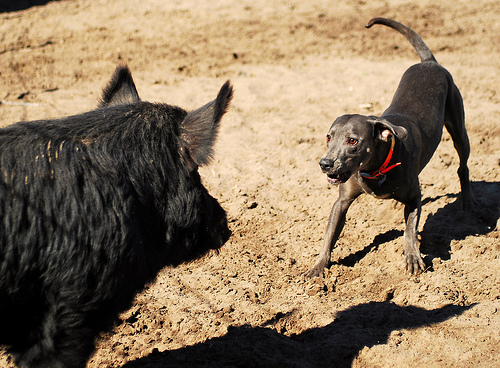Feral hog populations are increasing in size all across the U.S., and the state of Alabama is no different. As such, feral hog hunting in Alabama has taken off since the early 1990’s, when the increase in the number of hogs really took off. Feral hogs, although a tough adversary, should not be confused with game animals. Feral hogs are not native to Alabama, but they do compete directly with native animals for habitat, food and space. Hogs do make for good eating, but their rooting activity causes problems for many, many landowners, and they compete with other wildlife species for limited resources.
Feral hogs can be fun to hunt, but they are a nuisance and wild hogs should ever be stocked or released into new habitat. The eating habits of wild hogs are destructive. They are omnivorous, meaning they will eat most anything in their path, plant, animal or otherwise. Food habit studies have found that feral hogs will even eat whitetail deer, ground nesting birds, eggs, and snakes. Of course, hogs also eat acorns and other seed crops as well as food plots.

Feral hogs and white-tailed deer compete directly for food and space. The greatest competition between whitetail and feral hogs is during the fall for mast (acorns) crops. Hunters that have spent any amount of time in areas where both hogs and deer occur know that whitetail will often move away at the sight or smell of a hog, and deer will move away from food sources once hogs move in. Deer and hogs don’t mix well at feeders.
Feral hogs are prolific animals. In fact, hogs are capable of producing several litters of up to eight animals on an annual basis. Research has suggested that over 80% of the hog population must be killed each year for the hog population to remain stable. Landowners know that once a couple of hogs move in they tend to grow the population quite quickly. Once hogs are established in an area they are impossible to eradicate, but continuous hog hunting and hog trapping can help keep populations flat.
Feral hogs can often be found by hunters throughout the year, but they are easiest to pattern during the late winter and early spring. Hogs like thick, brushy habitat to hide in, but will feed just about anywhere, especially under the cover of darkness. Hogs eat on acorns during the fall and then turn to roots, grubs, and such during the winter. When food becomes more limited during the winter, hogs will increase their movements and can be patterned at food sources. Hogs can be seen any time of the day, but heavily-hunted populations tend to go nocturnal.
Hogs have poor eyesight as well as hearing, so hunters can often sneak up very close to animals while hog hunting in Alabama. This makes bowhunting for hogs quite fun, but hunters do have to play the wind correctly. Feral hogs have an excellent since of smell. It has been estimated that a feral hog‘s sense of smell is about 10 times more sensitive as a whitetail deer’s. And hunters know that a deer can smell pretty well. Feral hogs are smart animals that are difficult to control, fun to hunt and will be with us well into the future.
Thanks for feral hog article great information. Trying to find a location and/or county to hunt feral hogs. Everyone seems to be charge a arm and leg (sometime teeth) to hunt these animals. Any information you can provide would/will be greatly appreciate. Retired Marine(USMC).HSV